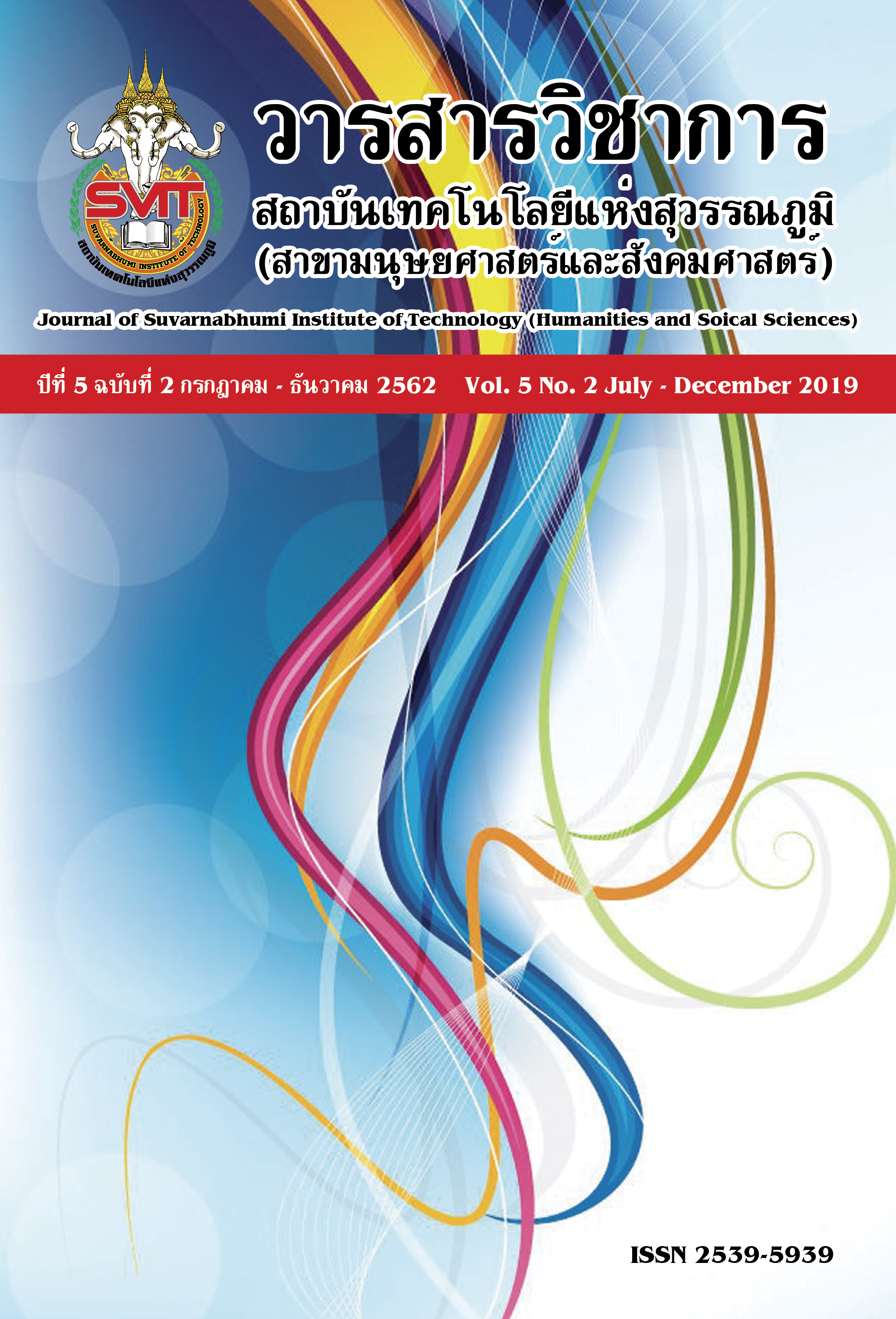COMMUNICATION FOR SELF INSPIRATION BUILDING AMONG THE DISABLED
Keywords:
communication, building inspiration, disabledAbstract
This research covered the following topics about self communication to build up inspiration among the disabled: 1) forms of communication; 2) content of communication; 3) factors that affected communication; 4) problems and approaches for solving them; and 5) development approaches for this type of communication.This was a qualitative research using the methods of in-depth interviews and observation. The key informants were 25 model disabled people with movement disability and 6 academics involved in rehabilitation work. They were chosen through purposive sampling and the snowball technique. The research tool was an in-depth interview form. Data were analyzed using descriptive analysis.Self communication to build up inspiration among the disabled was divided into 4 stages: 1) During the stage of encountering difficulty, self communication was characterized by rational thinking. During the second stage of acceptance of disability, communication was characterized by communication through touch and embrace for consolation and to give moral support. During the third stage of adaptation, communication was characterized by listening with discretion in order to adapt to the environment. During the fourth stage of leading life as normal, internal communication was characterized by creative thinking for survival. 2) The major content of self communication was, during the first stage getting over obstacles without getting discouraged; during the second stage optimism; during the third stage getting over obstacles through self encouragement ; and during the fourth creativity. 3) The personality-related factors that affected self communication to build inspiration were openness, extroversion, and willingness to reveal. The reference group-related factors were closeness of family relations and mutual understandings. 4) The problems with inspirational communication were that related people lacked data organization skills, lacked good methods of presentation. Approaches for solving these problems are to use casual communication, to present interesting information. 5) An approach for developing self communication to build up inspiration among the disabled is to have the disabled maintain presence of mind, be mindful and creative in their internal dialog, use reason to solve problems, and to apply the knowledge and experiences they have gained from what they have read, seen, heard or touched in their communication through speaking, writing, and expressing their emotions.
References
วิทยา นาควัชระ. (2548). วิธีคิดให้ชีวิตเป็นสุข. (พิมพ์ครั้งที่ 3). กรุงเทพฯ. กู้ดบุค
Andrea L. Dixon &Susan M.B. Schertzer.(2005). Bouncing back how salesperson optimism and self-efficacy influence attributions and behaviors following failure. Journal of Personal Selling and Sales Management. 25: 361-369. Volume 25, 2005 - Issue 4
Bandura, A. (1977). Principle of Behavior Modification. New York: Holt, Renehart and Winston.
Beverley J. Antle,and Other.(2009).The many layers of social support capturing the voices of young people with spina bifida and their parents. Journal of Health & social work. 34(2) p.97-106.
Carolyn M.Del, Polito. (1977) Intrapersonal Communication. (California ; Cummings Publishing Company, 1977) pp.2-7.
DaVito, Joseph A .(2017). Human communication: The basic course (14th edition). Boston: Allyn & Bacon.
Littlejohn,Stephen W. and Other. (2017). Theories of Human Communication. (11th edition). United States: Wadworth Cingage Learning.
Stoltz, P.G. (2000). Adversity quotient @ work Make everyday challenges. New York : Harper Collins
Thrash, T. M., & Elliot, A. J. (2003). Inspiration as a psychological construct. Journal of Personalityand Social Psychology, 84, 871-889.
Downloads
Published
Issue
Section
License
บทความที่ได้รับการตีพิมพ์เป็นลิขสิทธิ์ของวารสารวิชาการ สถาบันเทคโนโลยีแห่งสุวรรณภูมิ
ข้อความที่ปรากฏในบทความแต่ละเรื่องในวารสารวิชาการเล่มนี้เป็นความคิดเห็นส่วนตัวของผู้เขียนแต่ละท่านไม่เกี่ยวข้องกับสถาบันเทคโนโลยีแห่งสุวรรณภูมิ และคณาจารย์ท่านอื่นๆในสถาบันฯ แต่อย่างใด ความรับผิดชอบองค์ประกอบทั้งหมดของบทความแต่ละเรื่องเป็นของผู้เขียนแต่ละท่าน หากมีความผิดพลาดใดๆ ผู้เขียนแต่ละท่านจะรับผิดชอบบทความของตนเองแต่ผู้เดียว





